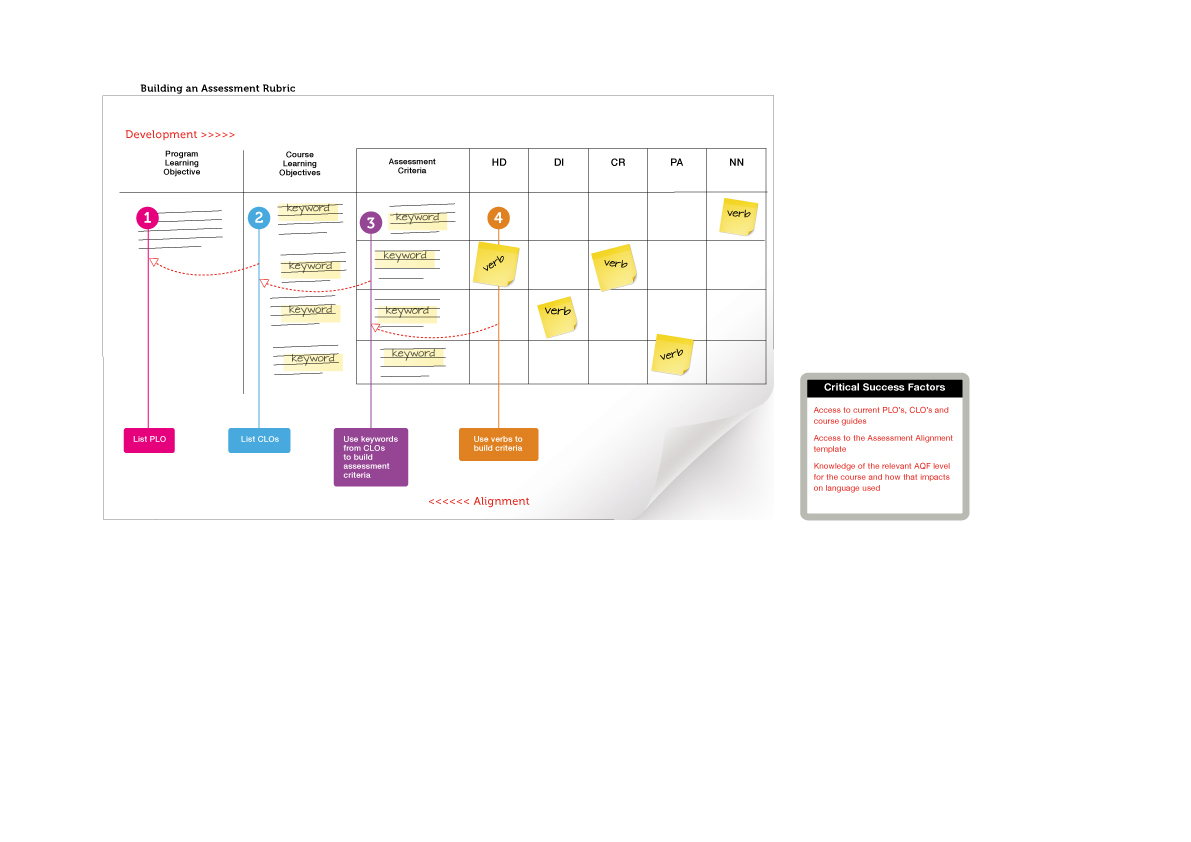Building Assessment Rubrics from Scratch
Design Pattern Tags : Assessment (including formative/summative design)
Building Assessment Rubrics from Scratch May 2016
Abstract/Snapshot:
Building Rubrics within a teaching team or even with your students improves assessment quality and marking. This Pattern captures the process of building a rubric from scratch for the individual teacher or building a rubric together in a teaching team. The process focus on developing appropriate language for any assessment criteria.
Learning Context This pattern has been established to support teaching and coordination team professional development. It is suitable for all levels of teaching staff to build capability in assessment methodology. Any rubric construction should not be done in isolation, therefore this pattern is suitable for small to medium teams.
Rationale To ensure a uniform approach across all teaching teams within a program, including the language within a rubric and the dialogue with the students is consistent.
Learning Design Teaching staff will build their capabilities by:
Building appropriate verbs for specific types of assessment rubrics
Develop language that supports the expectations from the students
Implementation of Bloom’s Cognitive Taxonomy when identifying verbs that support the type of assessment.
The Process:
As a prerequisite to this Pattern you need to complete or have a sound understanding of the ‘Developing and Aligning Assessment for Rubric preparation’ pattern.
Using the ‘Assessment Alignment Template’ (also used in the prerequisite) review the alignment between the PLO and CLO’s of your course.
Add in the criteria for the assessment that the rubric is being created for.
Make sure the criteria aligns to some, if not all of the CLOs.
NOTE : It is recommended to reflect on the type of assessment and why it has been created. What are your expectations from your students?
Check to ensure the verbs chosen support the type of assessment.
Start reflection process to help identify the performance expectations (See Pg. 9-10 - Assessment Alignment and Building Rubrics Participant Guide)
Refer to Bloom's Cognitive Taxonomy to assist in the alignment to cognitive level (See Pg. 12 - Assessment Alignment and Building Rubrics Participant Guide)
Based on reflection, write up the highest expectation first, followed by the lowest (HD and NN)
Conditions/Critical Success Factors Knowledge of the relevant AQF level for the course and how that impacts on language used
Access to current PLO’s, CLO’s and course guides
Access to the Assessment Alignment template
Case Studies/Implementation It is recommended to read pattern and associated resources from ‘Developing and Aligning Assessment for Rubric preparation’ pattern before undertaking this pattern.
Outcomes This process and its associated resources will provides teaching teams with the skills and knowledge to effectively write clear assessment criteria and develop assessment rubrics. When implemented correctly it will Improve marking objectivity, consistency and efficiency, both across different standards and across student cohorts. It will provide students with a well rounded learning experience as they expected when enrolling in the course.
Related Media

